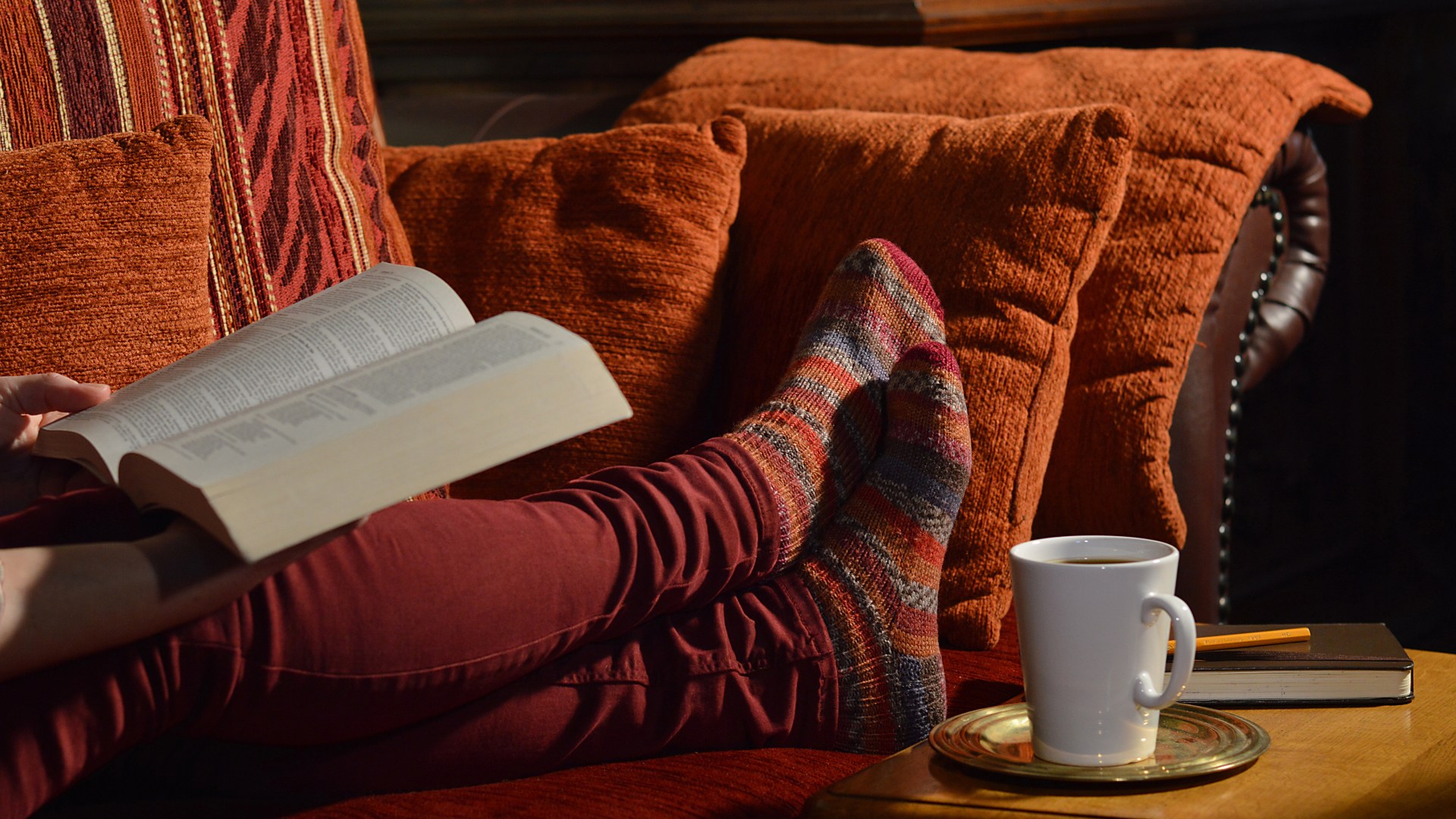I, like so many, am pretty good at self-care: I love bubble baths, magazines, drinking coffee, and reading good books. But even my skills in this area could not prepare me for the month I just endured. The city I live in, Portland, Oregon, just came through the most miserable four weeks that any of us can remember. Being surrounded by sleet, freezing rain, ice, and snow for the past month has made me well aware of how the winter season intensifies my desire to be comfortable.
Is it any wonder, then, that people from Nordic traditions (with their long, long winters) have identified and capitalized on the same need for comfort? The popular Danish word hygge (pronounced “hoo-ga”) roughly translates as “cozy” and “seeking comfort.” Chances are, you have seen this word hashtagged on an Instagram post, often accompanied by a picture of coffee, socks, a warm fire, knitting needles, and a book or two.
Hygge has taken the popular imagination by storm, and now I find myself inundated with messages for how to create a more comfortable life for myself. In 2017—following a year that exposed the deep racial and class divisions in America—this philosophy of comfort has given me pause. How should I, as a Christian in this particular moment in history, view a seemingly innocuous longing for coziness?
America is markedly different from the Nordic cultures in which hygge has been cultivated. Traditionally, hygge is understood as “comfort in moderation”—for example, having one cookie to ensure others get one, as well. But we Americans don’t tend to do moderation very well. TIME magazine recently identified how hygge is being increasingly marketed for consumption. This means that only certain pairs of socks or brands of tea (and lots of them) will give you, the unconsoled, the feeling of warmth and contentment that you desire. The marketing of hygge, then, is doubly problematic: It urges people to buy their way to happiness and also shuts out those who can’t afford to cash in on the trend.
The hygge trend also reflects our political reality. As the New Yorker points out, in a year when the Oxford dictionary chose “post-truth” as the word of 2016, hygge was not far behind (along with “brexiteer” and “alt-right”). The last 12 months have been a deeply rancorous, highly-politicized time and the ripple effects will be felt for decades, often in the most marginalized parts of society. So it makes sense that people latch onto an idea that encourages self-care and comfort—something we all need and ought to work towards.
Nonetheless, I would argue that this superficial understanding of comfort masks our deeper, truer need and fails to name our deeper, truer longings. What we really want is this: to create resilient communities of transformational love and to care for ourselves the way Christ cares for us.
I have found that learning from non-dominant cultures is crucial to understanding these deeper desires. As Audre Lorde, a prominent African American poet and activist, once wrote, “Caring for myself is not self-indulgence; it is self-preservation, and that is an act of political warfare.” She did seek out avenues of self-care, but her aim was not being cozy. Rather, her goal was surviving, thriving, and working towards justice. Jamila Reddy, reflecting on Lorde’s words, takes it a step further by pointing out that taking care of oneself—by making doctor’s appointments, for example—will not always feel good. Self-care, she writes, “means I have to let myself grieve even though it hurts, or admit that I’m really not okay when I’d rather nobody know.” In other words, it involves the deeper work of inward character building and outward community building. It requires what Eugene Peterson calls “a long obedience in the same direction.” And it entails resilience, the long work of showing up, day in and day out, to see God’s kingdom come on earth as it is in heaven.
I think about this as I stare at my wool socks. They are not peak hygge—after all, they’re not made out of cashmere—but they are still above and beyond my needs. As my city has been halted by terrible weather, I have stayed inside and tried to stay warm and dry and yes, as cozy as possible. I am grateful for my amenities, even as my conscience is pricked by the thought of friends and neighbors who not only don’t own wool socks but don’t even own a pair of boots. As I learn to pray for the daily needs of others, my gratitude for creature comforts is not marred—rather, it is deepened by the complexity of the human condition.
Nonetheless, the comforts of this life—cups of coffee, a thick sweater, a single-origin chocolate bar—are temporal. So what is truly comforting? That God is present with us in our suffering—a promise we find over and over again in Scripture. For this reason, I am often wary of anything (even a Nordic Instagram trend) that has the potential to cut us off from being close in heart and mind and body to those who suffer. Jesus said words that stick in my throat: “Woe to you who are rich, for you have already received your comfort” (Luke 6:24). While these words issue a warning against the pitfalls of worldliness, the Beatitudes offer words of invitation to a dramatically different way of life: “Blessed are the poor in spirit, for theirs is the kingdom of heaven” (Matt. 5:3).
I want to be in the multitude of the Beatitudes; I want to be where the blessings of Jesus are. Because deep down, I don’t just want to be cozy. I don’t just want cups of hot cocoa and thick scarves and warm feet for me and my neighbors. I also want to live up to God’s dream for the world. I want to be resilient in love. And I want to survive long enough to see a bit of the kingdom come.
D. L. Mayfield lives in Portland, Oregon with her husband and two small children and writes about refugees, theology, and downward mobility. Her book of essays, Assimilate or Go Home: Notes from a Failed Missionary on Rediscovering Faith was recently released by HarperOne. She blogs at dlmayfield.com and is on Twitter at @d_l_mayfield.









